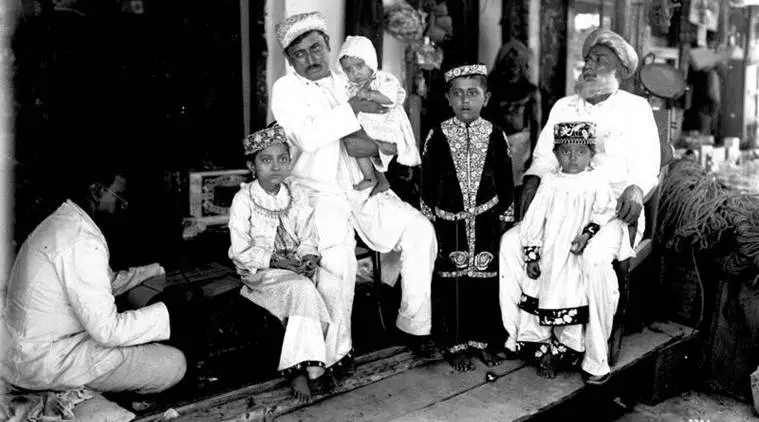 The presence of the Indian diaspora in East Africa can be traced back to the 17th century. (Wikimedia Commons)
The presence of the Indian diaspora in East Africa can be traced back to the 17th century. (Wikimedia Commons)
Kenyans of Indian descent have recently acquired recognition as the 44th tribe in the country. Kenyan news daily Daily Nation has reported that acting interior cabinet secretary Fred Matiang’i made the announcement last week noting the community’s sense of civic duty and their contribution to the socio-political advancement of Kenya. “The Head of State acknowledges that the Kenyan Asian’s contribution to Kenya has its roots at the dawn of our Nation,” said Matiang’i.
The presence of the Indian diaspora in Kenya can be traced back to the 17th century. With British colonial rule being established in India, and then later in East Africa, the migration of Indians to Kenya received a newfound impetus. Consequently, the community was intricately involved in the nationalist uprising in Kenya and made several robust contributions in ensuring the country’s independence. Despite their long history of presence in the country and their involvement in the socio-economic and political life of the country, Indians in Kenya have suffered from a certain invisibility in the political and historical discourse of the nation.

In a report published by the New York Times, Shakeel Shabbir, the first Member of Parliament in Kenya of Asian origin, says Indians in Kenya have for long enjoyed economic successes, but many feel excluded from the country’s political and social fabric. Supporting the movement demanding tribe status, Shabbir noted that while there is nothing concrete to be gained from becoming the 44th tribe since the community in Kenya is in any case economically well off, the recognition would give the Indian diaspora a sense of shared identity with the Kenyans.
A long complicated history of Indians in Kenya
Historian Sana Aiyar in her work on the Indian diaspora in Kenya notes that by the time Kenya became an independent nation, 2 per cent of the country’s population was composed of Indians who were part of the retail, wholesale and manufacturing sectors and provided skilled labour. Further, she notes that 30 per cent of Nairobi’s population was Indian. However, the strongly visible presence of Indians in Kenya is complicated by the racial and economic position of the community in the country. Immigrants to the East African republic from India, particularly from Gujarat, had started coming in since the 17th century. The advent of colonial rule expanded business opportunities for Indians from other parts of the subcontinent as well. For instance, a large number of Punjabis provided labour for constructing the railways. Further, Indians were also required for serve in the British Army in East Africa. While several Indians came back after the termination of their contracts, several stayed on there working as masons, mechanics and carpenters.
Most Read 1Qatar hands death penalty to 8 former Indian Navy men, Govt explores legal options 2Leo box office collection Day 8: Vijay-starrer aims to beat Jailer’s Rs 600 crore record, still has a long road ahead 3Deepika Padukone says she and Ranveer Singh were ‘technically allowed’ to date other people ‘until he proposed’: ‘There was no real commitment’ 4How much 50 over cricket domestically has Virat Kohli played: Nasser Hussain tears into England after they lose to Sri Lanka 5Ranveer Singh, Deepika Padukone kept on kissing even as a brick came through the window during Ram-Leela: ‘We didn’t break liplock’
By the early 20th century, a fresh inflow of Indians made their way into Kenya who emerged as the petty bourgeois class, serving semi-skilled labour to Europeans, Indians and Africans. Colonial administration in Kenya, like in India, was based on categorisation along racial, religious and ethnic lines. Consequently, a racial pyramid like structure evolved in the administrative set up, with Europeans right on the top with exclusive access to the fertile highlands, Indians in the middle, working as traders and Africans forming the bottommost rung. As noted by Aiyar, Africans were expected to fulfil dual roles. On the one hand they had to make European farms profitable and on the other hand, they were expected to cultivate their own lands and sell the surplus to the shops run by Indians.
By the mid twentieth century, when anti-colonial movements took roots in India, the same ideologies of freedom and equality were carried by the immigrants to Kenya. Thereafter, Indians in Kenya started agitating for racial equality. The intermingling of Indian and African nationalist politics has been the subject of research for several historians. An interesting aspect of the relation between the two colonised communities however, is that while on one hand the two could relate to each other in terms of the shared dream of independence, on another hand there is sufficient evidence of conflict between the two communities on account of the racial hierarchy that existed. As a result, despite the contribution made by the Indian diaspora to Kenyan demands for independence, the community had continued to be relatively invisible in the official historical records of Kenya.
Also ReadWhy Sanskrit has strong links to European languages and what it learnt in…A short history of the Sardar Sarovar Dam on river NarmadaHere is everything you need to know about Indian JewsHere is what happened in Kedarnath, and rest of Uttarakhand, in 2013
The latest move by the Kenyan government to recognise Indians in Kenya as a tribe is move that is expected to correct this invisibility and make an official note of the efforts to achieve nationhood and development that the Indian community has shared with the other Kenyan tribes historically.
© IE Online Media Services Pvt Ltd


